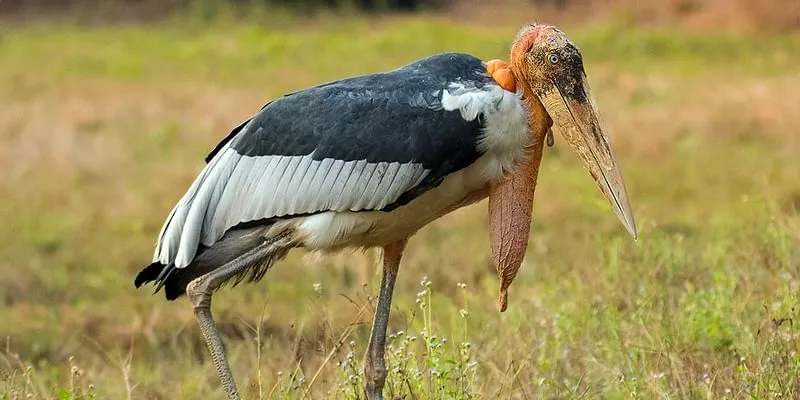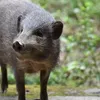These 5 organisations are rescuing wildlife and endangered animals
With the increasing threat to animal biodiversity in India, SocialStory lists some organisations that have been working towards the conservation of wildlife.
Over the centuries, the number of animal species has dropped drastically due to human settlement and exploitation of resources.
Cruelty to animals has been disrupting natural co-habitation on earth thanks to our ancestors, who’ve been using animals not just for food, but also to gift somebody a belt, necklace, sweater, or a pair of shoes.
The dodo, the Tasmanian wolf, the woolly mammoth or a dugong – all of them are now just pictures in an encyclopaedia. In recent times, about eight species of birds, including the blue macaw have also most likely gone extinct or are highly endangered, as per the latest records published in the journal Biological Conservation.
However, there are a number of species that are on the verge of extinction, but have a sliver of hope thanks to organisations like World Wildlife Fund (WWF). These organisations have been working to rescue animals from illegal trade, culling, circuses (before the ban of wildlife animals), and others.
SocialStory lists five such organisations that have been working to rescue animals in and across India.
Wildlife SOS

Elephant rescue is one of the primary focus of Wildlife SOS. (Image: Pexels)
Established in 1995, Wildlife SOS was established by a small group of individuals inspired to start a movement and make a lasting change to protect and conserve India’s natural heritage, forests, and wildlife wealth.
Today, the organisation works towards protecting Indian wildlife, conserving habitats, studying biodiversity, conducting research, and creating alternative and sustainable livelihoods for erstwhile poacher communities, or those who depend on wildlife for sustenance.
Its greatest accolade has been successfully ending the illegal and barbaric practice of dancing bears in India.
The organisation have rescued over 628 endangered sloth bears from illegal custody while helping the nomadic communities with sustainable alternative legal livelihoods to establish a successful model in place for sustainable conservation solutions.
Aaranyak and Hargila Army

The Greater Adjutant Stork (Image: eBird)
While different people and organisations work with many endangered species, Purnima Devi Barman decided to work to save storks. The researcher knew something was wrong when the numbers declined around her residence in Assam.
The Greater Adjutant Storks, also known as ‘hargilas’ or bone swallowers, are considered vile creatures for their scavenger-like mannerisms. So they are mostly smoked out of the trees, or trees with their nests are felled.
This kind of human attitude has made these storks endangered, according to the International Union for Conservation of Nature’s (IUCN) Red List of Threatened Species, with only about 800 to 1,200 of these birds left in the world.
So, Purnima went to the villagers and started creating awareness about the nature of these birds. In fact, an NGO Aaranyak helped her launch a community-based programme in Kamrup, Assam, to protect the storks.
Today, Purnima leads the ‘Hargila Army’ – a battalion of 400+ women who are actively involved in the conservation of these storks.
Indian Rhino Vision 2020 (IRV 2020)

Representational image (Pexels)
For the longest time, the rhinoceros was needed for its horn and thick skin. In fact, they were big favourites among poachers, who would leave them to die after extracting their invaluable horns.
Falling into the vulnerable category of IUCN’s list, rhinos are now found only in two places in Asia – Kaziranga National Park, Assam, and Chitwan National Park, Nepal.
Launched in 2005, Indian Rhino Vision 2020 had a goal to attain a wild population of at least 3,000 greater one-horned Rhinos in Assam by 2020.
Despite the heavy protection, about eight of these rhinos, post which heavier security was implemented. However, their efforts have brought these limited numbers to a population of about 2,900 rhinos in Assam in 2020.
Sahyadri Nisarga Mitra (SNM)

Indian pangolin
The Indian Pangolin is one of the most trafficked animals in the world, for two things – its scales and its meat. Their scales that were once prevalent in Chinese medicine are believed to have medical properties.
However, in 2015, this creature was put into the endangered category of IUCN’s list.
Founded in 1992, Sahyadri Nisarga Mitra (SNM) is an NGO that focuses on the conservation of these rare Indian Pangolins in the Konkan areas, along with other initiatives including the Marine Turtles and bird conservation projects.
Through their various activities, SNM aims to boost its conservation efforts by involving local communities for effective protection of wildlife, especially of the Pangolin.
Wildlife Trust of India (WTI)
1565003702593.png?fm=png&auto=format)
Representational image (Credit: Shutterstock)
The Wildlife Trust of India is an organisation that is committed to conserve wildlife and preserve their habitats.
A three-member team that set off on the wildlife conservation journey in 1998, is now a family of over 150 professionals consisting of conservation biologists, scientists, sociologists, wildlife veterinarians, managers, lawyers, finance experts, and communication specialists.
The organisation runs about 44 projects in India through their ‘depth’ and ‘breadth’. While their ‘depth’ projects focus on the conservational challenges of a specific area, their ‘breadth’ projects address issues not limited by geographical boundaries like training forest staff and preventing accidental wildlife deaths.
Edited by Saheli Sen Gupta





1565003702593.png?mode=crop&crop=faces&ar=16%3A9&format=auto&w=3840&q=75)





![[Weekly funding roundup July 13-19] VC inflows continue to show modest rise](https://images.yourstory.com/cs/2/220356402d6d11e9aa979329348d4c3e/Weekly-funding-roundup-1670592545805.png?mode=crop&crop=faces&ar=1%3A1&format=auto&w=3840&q=75)


